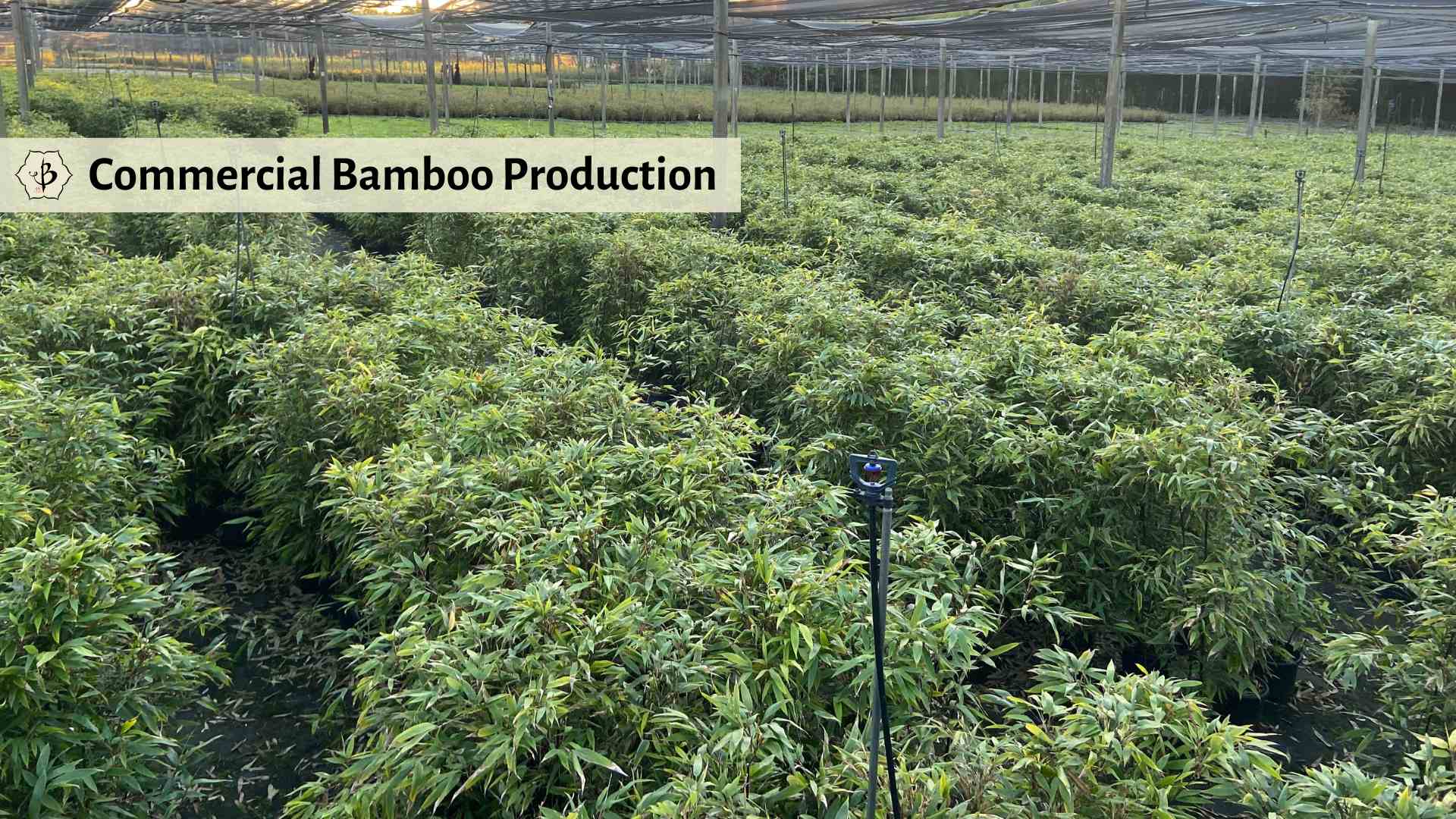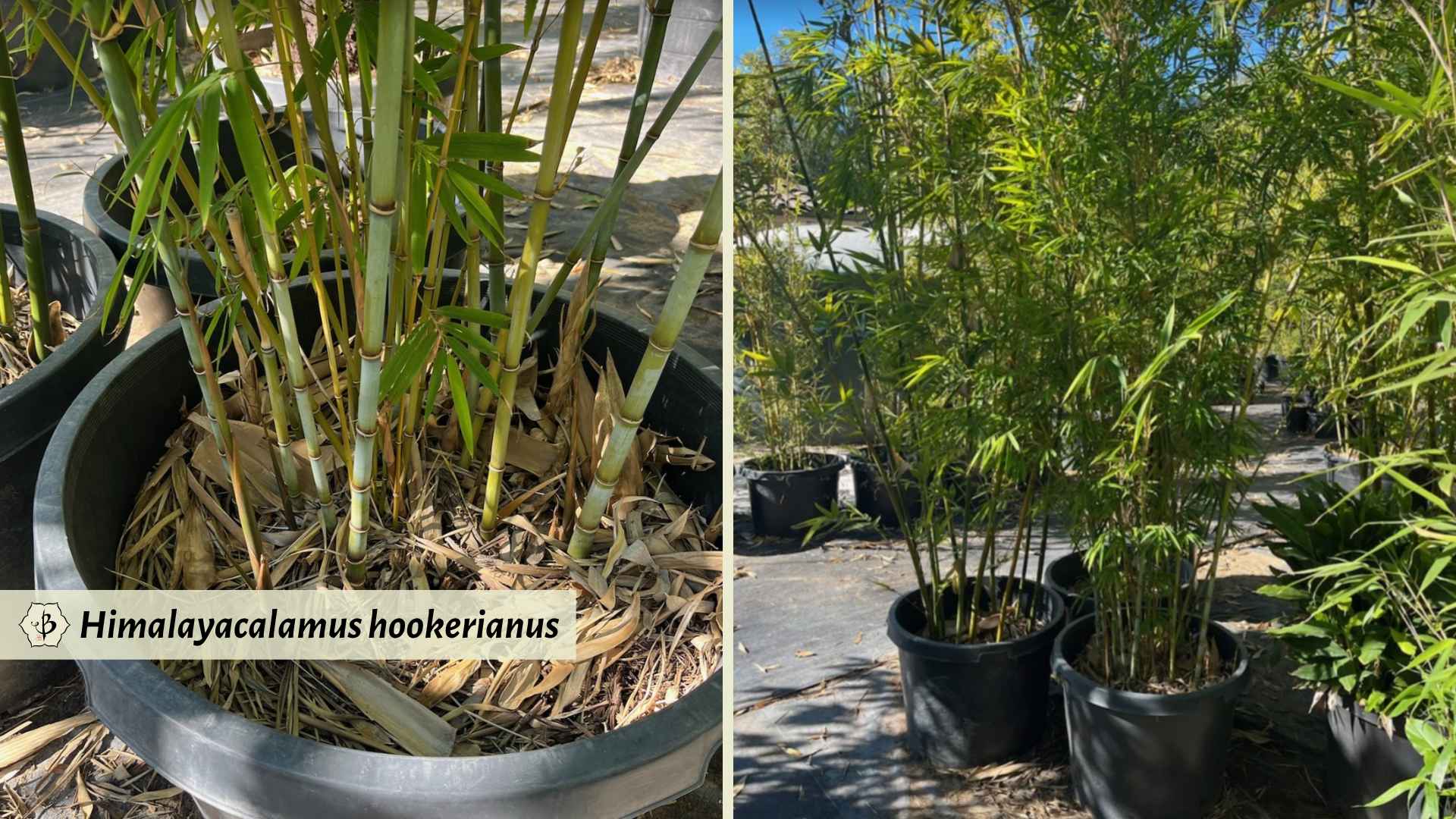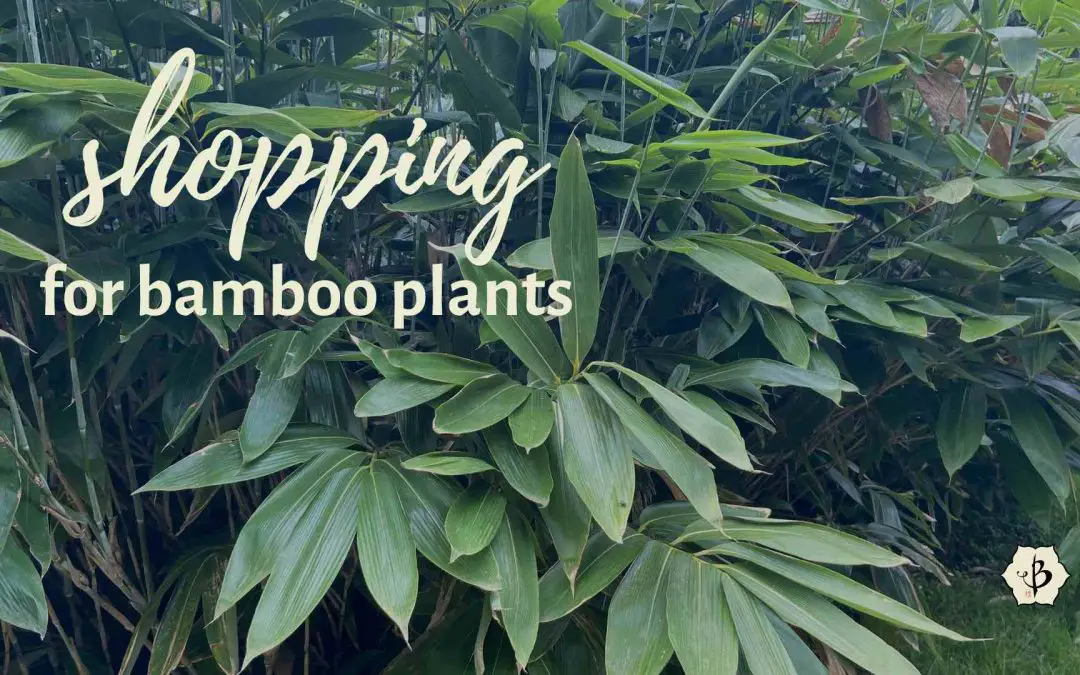Browsing through the aisles of greenery at my neighborhood nursery is one of my all-time favorite pastimes. I know some guys would prefer to spend Saturday morning at the hardware store basking in the pleasure of latest power tools. But I’m far more at home grazing through the philodendrons, examining exotic bromeliads, and shopping for a new species of bamboo. But once you have a handful of bamboo varieties, it’s not so easy to find a new species at your local garden supply store. So what’s the best way to go about shopping for bamboo plants?
If it’s live bamboo you’re looking for, it’s always best to go to a bamboo specialist. If you’re lucky enough to live within driving distance, you can visit one yourself. It’s always preferable to shop for bamboo plants in person. Otherwise, you can find a few bamboo nurseries or individual growers who offer plants online by mail order. You should do some research ahead of time, but the specialists will be knowledgeable enough to help you shop for the best bamboo that’s right for your needs and conditions.
NOTE: This article first appeared in October 2020, most recently updated in June 2024.

How to shop for bamboo
In the following article, we’ll help you locate a reliable source for live bamboo plants. We’ll also help you determine what sort of bamboo will be the best in your garden, depending on things like your climate and how much space you have.
Buy your bamboo from a reliable source
If you don’t care what kind of bamboo you’re growing, and whether it’s a runner or a clumper, you can just head to your local home and garden store and take whatever they’ve got. There’s a good chance it will be Golden bamboo, a fast-growing and highly resilient species with vigorous, running rhizomes.
But if you’re serious about shopping for bamboo, and you’re looking for some specific varieties to add to your landscaping, then it’s time to find a bamboo specialist. After all, there are more than 1,200 species of bamboo out there. And most of them look relatively (or even remarkably) similar.
Furthermore, it’s not uncommon for bamboo to be mislabeled. Golden Bamboo (a running Phyllostachys aurea), for example, can sometimes be sold as Golden Goddess (a clumping Bambusa multiplex). In most cases it’s probably just an honest mistake. I’ve been growing bamboo for years, and I still have a hard time identifying and distinguishing species.
So some plant sellers aren’t going to know the difference. But an underhanded nursery might be tempted to sell you a runner and tell you it’s a clumper. Many gardeners are afraid to plant running bamboo because it can become invasive. And clumping bamboos tend to be more expensive because they are slower to spread and generally more difficult to propagate. But bamboo specialists understand that this is one of the most important characteristics of a bamboo species, and they will be sure to get it right.

Bamboo specialist nurseries
We have a few directories of bamboo growers and suppliers that you can refer to on our website. If you live in California or Florida, you’ll have plenty of options. But in the Midwest and parts further north, you’ll find it increasingly difficult to shop locally for bamboo plants.
- Bamboo nurseries in the U.S.
- Shopping for bamboo in California
- Buying bamboo in Canada
- Buying bamboo in Colorado
If you can find a specialist in your area, that’s always going to be better. For one thing, live plants don’t like to be shipped. So if you can pick up your plants in person, the plants will be happier. Secondly, a local grower should be far more familiar with your climate and general growing conditions. That will help to ensure that you purchase a bamboo plant that’s appropriate for your location.
As an alternative to these reputable growers, you might also try shopping for bamboo plants on eBay, Craigslist or Amazon. You can frequently find offerings through these platforms, although it may be a bit more of a gamble. The advantage of Craigslist is that you might find other bamboo enthusiasts in your local area, who are growing and propagating their own plants, species that have proven to do well in your climate.
What about shipping live bamboo?
Many of the growers in our bamboo nursery directories will happily ship live plants, usually anywhere within the U.S. or Canada. But a lot of great nurseries, like Bamboo Sourcery in Sebastopol, California, and most of the Canadian nurseries, will not ship plants.
Lewis Bamboo, located in Alabama, is one of the most reputable suppliers in the country, and they do offer mail order. Being based in Alabama, their selection leans more toward the warmer weather species. Bamboo Garden in Oregon also ships live bamboo, and they may have a better selection of temperate bamboo varieties for cooler climates.
These growers have expensive experience in packing and shipping live plants, and they know how to do it safely and effectively. They also have guarantees to ensure that your bamboo arrives in healthy condition.
Prices for live bamboo plants
Like so many things in the wide world of bamboo, the cost of live plants can vary greatly. The two chief factors will be the bamboo species and the size of the pot it’s in. Typically, the running bamboos and more common species will cost less, while clumpers and rare breeds will cost more. Clumping bamboo spreads more slowly and therefore takes more time to propagate.
Depending on the size of the plant, the usual prices for live bamboo will look something like this:
- 1 gallon — $20 to 100 per plant (about 1-3 feet tall)
- 5 gallon — $40 to 50 per plant (about 4-8 feet tall)
- 15 gallon — $50 to 200 per plant (about 6-15 feet tall)
You can also find bamboo plants sold in larger pots, for serious landscaping installations. But in those cases, you’ll probably want to contact a nursery directly. Keep in mind, if you’re shopping for bamboo plants by mail order, you should also expect to pay extra for the shipping.

Deciding which bamboo to buy
When you’re shopping for bamboo plants, the two most important considerations are going to be your climate and your space. Many bamboo species are native to tropical or subtropical regions, will not tolerate temperatures below 30 to 32º F. For the most part, these are going to be clumping varieties of bamboo.
Then you have some bamboos that are more temperate, hardy down to 10º or 20º F. Here you have a mix of running and clumping bamboos, but the running bamboo is almost always going to be more cold hardy than the clumpers. Check out our article on Growing bamboo in USDA zones 7 and 8 for complete details and species recommendations.
And if you’re in a really cold part of the country, like zones 4 and 5, don’t worry. There’s still a good selection of Cold Hardy Bamboos that can survive and even thrive in your climate. Most of these bamboos will be runners and members of the genus Phyllostachys. But you can also find some surprisingly cold tolerate clumpers from the genus Fargesia, hardy down to -15 or -20º F.
Knowing your climate restrictions will be the first step. And now you need to think about how much space you have and what you plan on doing with the bamboo. Maybe you’ve got room to spread out, and maybe you need something compact. Are you looking for a privacy screen to shelter you from your neighbor? Does it need to be 30 or 40 feet tall, or will 10 feet suffice? Bamboo comes in all sizes.
Or perhaps you want an eye-catching centerpiece for your garden, something elegant, attractive and unusual. There are so many possibilities, from Buddha Belly with its bulbous internodes, to Bambusa textilis ‘Gracilis’ with its tight-clumping culms and graceful foliage. Then there are a host of dwarf bamboo varieties that work as a ground cover, or in pots, or even indoors.
Be sure to check out our detailed articles on How to choose the best bamboo and the 10 Best bamboos for your garden.

Alternatives to buying bamboo
If you’re too far from a bamboo specialist and don’t feel like shopping for bamboo plants online, you still have other options. One is to order some bamboo seeds and try growing your own from scratch. But finding seeds is harder than finding live plants. And growing bamboo from seed can be a real challenge, although a rewarding one.
In some cases, growing bamboo just might not be a practical option for you. Maybe you’re based in Alaska, or you live in an apartment building with no garden space. Growing bamboo indoors is not so easy. But there are a handful of indoor plants that resemble bamboo and can produce that same soothing ambiance for which bamboo is so well known.
Check out our article on Plants that look like bamboo (but aren’t).
Further reading
If you enjoyed this article about shopping for bamboo plants, please consider sharing the blog post or subscribing to our mailing list. You might also be interested in some of the following links:
- How to grow bamboo: The complete guide
- Best cold hardy bamboos for snowy climates
- Growing bamboo for a privacy screen
- Best bamboo varieties for poles
- Best bamboo for construction
- Growing bamboo in pots
- Growing bamboo indoors
- Bamboo containment
FEATURED PHOTO: Indocalamus tessellatus, or Giant Leaf Bamboo, grows in the cool shade. Photo by Fred Hornaday.

























